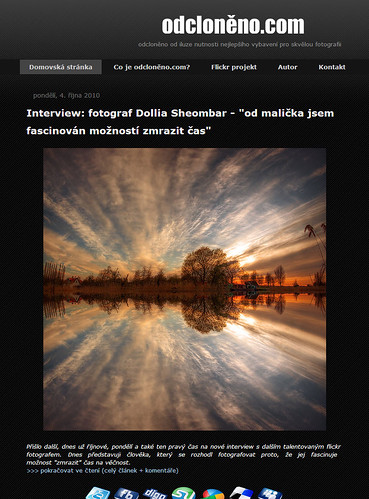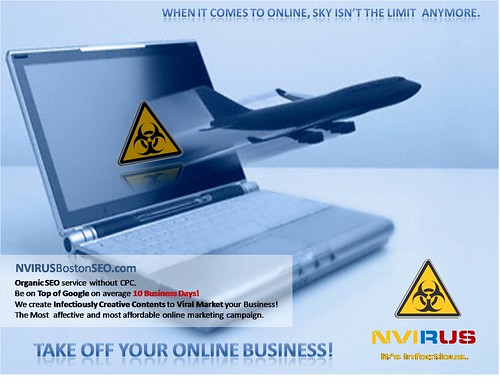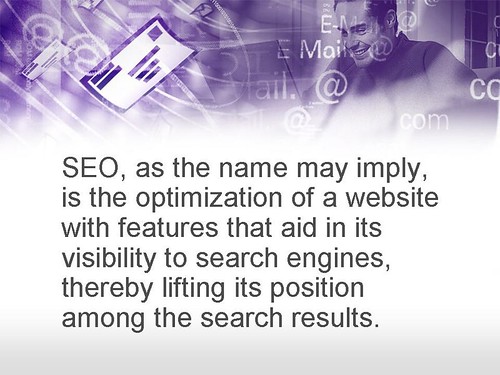A few years ago, the Internet experienced a video revolution. As broadband access expanded and more people began uploading content, video became an expected resource for consumers. Businesses could get more mileage out of television commercials and engage users by linking to video reviews of its products.
A year ago, we saw evidence of small and medium-sized business increasing budgets for video content – to be used both on their homepages and in advertisements. In 2009, 19% of businesses polled were using video (up from 5% in 2008) and I’m willing to bet that number will be much higher in the 2010 report that should come out later this month.
Now, as technology has become more affordable and increasingly mobile, we’re able to experience virtually anything online. As such, local search engines are evolving into master content synthesizers to meet the needs of consumers and advertisers alike – offering video and photos, local advertising deals, user reviews, QR codes, maps and directions, etc.
Consumer expectations of local search engines have never been higher. Users want to see photo and video reviews of a company’s products, read what other people have to say, and even take a virtual tour of your store or restaurant before they visit.
The same is true of small- and medium-sized business owners looking to find a competitive advantage. Local search engines are offering more dynamic content than ever before to users and it’s up to search marketers to help business owners feed that content.
It’s interesting to see how video content has changed since the advent of YouTube. Instead of traditional video advertising, we’re seeing new technology that lets users look around your business from their own home. Soon, we’ll be able to find virtual creations of almost any environment online – and those virtual tours are being integrated with current deals and other advertising promotions to drive traffic to your business.
Recently, a company called EveryScape partnered with Bing and YP to offer digital advertisers a new local search solution – virtual tours. For example, YP360 will let a user step inside a restaurant in Baltimore while they’re still on the train. They can choose a place and even set a reservation, all within the same application on their phone.
Google Earth has gone indoors and local search engines are responsible for bringing this detailed and vivid content to users while keeping it simple and accessible. And the business case for offering this new content to users and advertisers alike is clear as local advertising is expected to grow to $16.1 billion this year, up from $13.7 billion in 2010.
Even more, mobile phone advertising spending is expected to be more than a billion dollars in 2011, up 48% from 2010. Local search engines like YP and Yelp! are seeing over 20 million visitors a month, many of them accessing via mobile phones.
This is a great opportunity for local search engines and advertisers to embrace this new technology and get ahead of the pack. Effective local advertising goes beyond building a social networking presence and listing in directories – you have to make sure your content is engaging. In the online world, the savviest local search marketers who use this technology well will have the most successful campaigns.
I recommend that any business owner or local search marketer read up on the latest digital advertising solutions and consider offering your customers virtual tours of your products or store. To set your business apart, you need to stay current with the best that local search has to offer.
Opinions expressed in the article are those of the guest author and not necessarily Search Engine Land.
Related Topics: Locals Only
A few years ago, the Internet experienced a video revolution. As broadband access expanded and more people began uploading content, video became an expected resource for consumers. Businesses could get more mileage out of television commercials and engage users by linking to video reviews of its products.
A year ago, we saw evidence of small and medium-sized business increasing budgets for video content – to be used both on their homepages and in advertisements. In 2009, 19% of businesses polled were using video (up from 5% in 2008) and I’m willing to bet that number will be much higher in the 2010 report that should come out later this month.
Now, as technology has become more affordable and increasingly mobile, we’re able to experience virtually anything online. As such, local search engines are evolving into master content synthesizers to meet the needs of consumers and advertisers alike – offering video and photos, local advertising deals, user reviews, QR codes, maps and directions, etc.
Consumer expectations of local search engines have never been higher. Users want to see photo and video reviews of a company’s products, read what other people have to say, and even take a virtual tour of your store or restaurant before they visit.
The same is true of small- and medium-sized business owners looking to find a competitive advantage. Local search engines are offering more dynamic content than ever before to users and it’s up to search marketers to help business owners feed that content.
It’s interesting to see how video content has changed since the advent of YouTube. Instead of traditional video advertising, we’re seeing new technology that lets users look around your business from their own home. Soon, we’ll be able to find virtual creations of almost any environment online – and those virtual tours are being integrated with current deals and other advertising promotions to drive traffic to your business.
Recently, a company called EveryScape partnered with Bing and YP to offer digital advertisers a new local search solution – virtual tours. For example, YP360 will let a user step inside a restaurant in Baltimore while they’re still on the train. They can choose a place and even set a reservation, all within the same application on their phone.
Google Earth has gone indoors and local search engines are responsible for bringing this detailed and vivid content to users while keeping it simple and accessible. And the business case for offering this new content to users and advertisers alike is clear as local advertising is expected to grow to $16.1 billion this year, up from $13.7 billion in 2010.
Even more, mobile phone advertising spending is expected to be more than a billion dollars in 2011, up 48% from 2010. Local search engines like YP and Yelp! are seeing over 20 million visitors a month, many of them accessing via mobile phones.
This is a great opportunity for local search engines and advertisers to embrace this new technology and get ahead of the pack. Effective local advertising goes beyond building a social networking presence and listing in directories – you have to make sure your content is engaging. In the online world, the savviest local search marketers who use this technology well will have the most successful campaigns.
I recommend that any business owner or local search marketer read up on the latest digital advertising solutions and consider offering your customers virtual tours of your products or store. To set your business apart, you need to stay current with the best that local search has to offer.
Opinions expressed in the article are those of the guest author and not necessarily Search Engine Land.
Related Topics: Locals Only
Surface Encounters
MLB creates new seven-day DL for concussions
![]() Major League Baseball and its players union have announced a new set of protocols for dealing with concussions, including the creation of a new seven-day disabled list for players with the injury.
Major League Baseball and its players union have announced a new set of protocols for dealing with concussions, including the creation of a new seven-day disabled list for players with the injury.
Surface Encounters
Small Business <b>News</b>: Social Media Brand
What is your social media brand? Do you have one? Sure, many small business owners and entreprene...
Surface Encounters
Small Business <b>News</b>: Social Media Brand
What is your social media brand? Do you have one? Sure, many small business owners and entrepreneurs are coming around to the enormous importance of social.
Surface Encounters
In February of 2007, 83.24 percent of users visiting TechCrunch did so from a Windows machine. One year later, in February 2008, the stranglehold remained firm at 80.44 percent. In February 2009, the number was at 74.04 percent. Last year, it was 61.59 percent. And this year? The number of people visiting our site from Windows machines dipped to 53.84 percent.
The writing is on the wall.
Look at those numbers again for a second. In four years, Windows share among TechCrunch readers has fallen 30 percentage points. That’s incredible.
The knee-jerk reaction in the comment section will likely be something like “it’s because you guys cover Apple so much”. But the fact of the matter is that Macintosh share, after rising for three of those four years, fell last year as well. It’s the mobile devices — specifically the iPhone, iPad, and Android devices — that are eating away at Windows.
In fact, if the trend over the past four years continues at about the same pace, in two years, devices made by Apple (Macs, iPhones, iPod touches, and iPads) will surpass devices that run Windows as the top visitors to TechCrunch. And depending on how popular the iPad 2, iPhone 5, and OS X Lion are, it could easily happen next year.
Here are the broken down numbers:
Feb 2007
- Windows: 83.24%
- Mac: 13.59%
- Linux: 2.51%
Feb 2008
- Windows: 80.44%
- Mac: 15.15%
- Linux: 2.97%
- iPhone: 0.77%
- iPod: 0.15%
Feb 2009
- Windows: 74.04%
- Mac: 20.48%
- Linux: 3.01%
- iPhone: 1.60%
- iPod: 0.28%
- Android: 0.09%
Feb 2010
- Windows: 61.59%
- Mac: 28.62%
- iPhone: 4.07%
- Linux: 3.49%
- Android: 0.87%
- iPod: 0.53%
Feb 2011
- Windows: 53.84%
- Mac: 27.64%
- iPhone: 6.72%
- iPad: 3.44%
- Linux: 3.28%
- Android: 3.06%
- iPod: 0.62%
While even the last batch of stats shows that Windows still has a nice cushion over number two, Mac, if you add the Apple products put together, it’s a different story.
- Feb 2007: 13.59% Apple products
- Feb 2008: 16.07% Apple products
- Feb 2009: 22.36% Apple products
- Feb 2010: 33.22% Apple products
- Feb 2011: 38.42% Apple products
In the four year span, Apple has added 25 percentage points to their share among TechCrunch readers. That nearly all of the 30 percentage points that Windows lost in that same span (Android’s growth pretty much fills in the rest).
So it currently stands at Microsoft’s 53.84 percent versus Apple’s 38.42 percent. Again, a big year for iPad, iPhone, and Mac could mean a changing of the guard as soon as next year. But unless something drastic changes, you can be sure that Apple will be dominant among TechCrunch readers in two years.
The latest rumors have Windows 8 showing up sometime in mid/late 2012. But the fact of the matter is that Windows 7, much more widely praised than the disaster that was Vista, hasn’t helped Microsoft buck this trend among our readers. Perhaps they’re only hope of gaining back share at this point is Windows Phone. So far, that hasn’t been going too well. Nokia should help that, but will it be enough to offset the Windows losses?
Humorously, Microsoft’s best hope for not falling to Apple may well be Android. If Google’s platform continues to make gains, it could prolong Apple passing Microsoft.
But again, Apple has iPhone 5, iPad 2, and OS X Lion on the immediate horizon — all within the next few months. And then there’s the very real possibility of another iPad in the fall.
The iPad 2 and iPhone 5 are likely to push the Apple share forward immediately. But don’t sleep on OS X Lion either. The early indications are that Apple has indeed made it much more iOS-like. That means millions of iPad/iPhone/iPod touch owners who have traditionally been PC users, are going to feel a lot more comfortable on a Mac than ever before.
And a new PC-to-Mac data migration system built in to Lion will only help that.
OS X Lion is going to feed off of iOS users, and vice versa. And the Mac ecosystem is going to continue to expand. Just as happened in the browser world with Chrome taking over, a transition is happening among TechCrunch readers in the ecosystem space. The numbers don’t lie. And Microsoft better pray that our readers aren’t leading indicators of overall trends in the space — which is exactly what you have been in the past.
I read an interesting article this morning that suggested Apple would change its mind and put Adobe’s Flash technology on its iOS devices within a year. I don’t think that’s going to happen.
In an open letter to users, Apple CEO Steve Jobs gave several reasons why he didn’t want Flash on the iPad, iPhone or iPod touch. They are: Flash isn’t open; the full web; reliability, security and performance; battery life; and touch.
Adobe began shipping Flash Player 10.1 for Mobile last June, but even Laptop magazine admitted that “Steve Jobs was right,” and that “Adobe’s offering seems like it’s too little, too late.” Granted, that report was from six months ago, but it still doesn’t bode well for the technology.
There is no doubt that Adobe is making advances with Flash on mobile devices, but I don’t believe future changes will be enough to get Apple to adopt the technology.
Jobs has been very clear that Apple supports HTML5, an open technology that is controlled by a standards committee, not one company. By building support for that technology into Webkit, Apple is ensuring that mobile Web browsers will be able to access what we’ve come to know as the “full web.”
Webkit is used by Google, Palm, Nokia and RIM, so it has a pretty solid base.
One of the arguments often bantered about when the discussion of the “full Web” comes up is video. There is no doubt that Flash made huge strides over the years in having sites like YouTube encode their videos in Flash. But that’s for the desktop.
As Jobs points out, almost all of this video is also available in H.264 format (a format Flash also supports), so it’s viewable on the iPhone, iPad and iPod touch.
“Add to this video from Vimeo, Netflix, Facebook, ABC, CBS, CNN, MSNBC, Fox News, ESPN, NPR, Time, The New York Times, The Wall Street Journal, Sports Illustrated, People, National Geographic, and many, many others. iPhone, iPod and iPad users aren’t missing much video,” wrote Jobs.
You may ask why other companies adopted Flash for their mobile devices when Apple won’t. That’s easy, they are looking for something they have that Apple doesn’t. Considering how hard it is for tablet makers to compete with Apple, any perceived advantage will work.
I’m not an Adobe hater—I know quite a few people that work at Adobe and I think they’ve done some amazing things over the years. Flash for mobile devices isn’t one of them.
Chris Dawson said he gives “Apple a year until they cave [and adopt Flash]. Android tablets will just be too cool and too useful for both entertainment and enterprise applications if they don’t.”
I have been using my iPhone for years and my iPad for one year. I honestly can’t remember the last time I went to a Web site that wouldn’t load because I didn’t have Flash installed. I can load videos from YouTube and a host of other sites too, no problem.
Apple has sold more than 160 million iOS devices and there are no screaming, angry hordes of users breaking down the doors at 1 Infinite Loop demanding Flash on their devices.
In order for Apple to change its mind and adopt Flash, the technology has to be proven to be indispensable and that it will benefit its users. Apple has proven just the opposite is true.
Editor’s Note: Jim Dalrymple has been writing about Apple for more than 15 years. You can follow him on Twitter @jdalrymple and on his Web site at The Loop.
Surface Encounters
Surface Encounters
Preview of Final Result
Resources
- PT Sans Bold – FontSquirrel
- Free App Icons for Developers – WebAppers
Step 1
Open Photoshop and create a new document that is 1200 x 1200 pixels, 72 dpi, and RGB Color. Fill the layer with white. (Ctrl+Backspace or Delete)
Step 2
Now create a rectangle for the header and fill it with a white-grey color, then use the colors on the image for the “Gradient Overlay”. Our search and logo will eventually be part of the header.
Step 3
Create a new rectangle above the previous one, with attributes as shown below. The following drop shadow effect creates a look of a 1 pixel stroke which does increase the look of that simple bar. Note: this step creates a horizontal line.
Step 4
Now add the “Gradient Overlay” layer style with the hex codes indicated.
Step 5
Add a white 1 pixel stroke. The following stroke of 1 pixel will divide the grey shadow effect. It’ll eventually work as a divider.
Step 6
Make one more rectangle in the middle-right zone, and fill it with white and add a 1 px stroke as indicated – it will be our search box.
Step 7
One more rectangle should be created and filled with blue. Set the inner shadow as indicated below, this will be our search button. This blue works great in combination with grey, white and light-grey. Blue will be the major contrasting color we use as we work through this template.
Step 8
Add the Gradient Overlay details to the button with the details from image.
Step 9
Add a 1 px stroke to the button with the color indicated. Take a look at the first and the final result of the button so you can see the difference all these details made.
Step 10
Now add this drop shadow effect for the text placed in the search box, using PT Sans Bold. This will be the final step in creating your search button. You may want to try other fonts, but the PT Sans Bold is really good for this small button.
Step 11
Make another fill under the header section, this will be the navigation area. Here we will place the navigation links of our template.
Step 12
Write your navigation links using a dark-grey color, then add a white “drop shadow” effect. The effect used for the navigation links is the same used for the search button.
Step 13
With 1px vertical line, make divisions between each links. The lines should be black and will really increase the beauty of the navigation area.
Step 14
Over the home section, make a fill with the blue and then add a Gradient Overlay style as indicated.
Step 15
Copy the Home link, this time color it white and add a drop shadow effect.
Step 16
Create a big, grey zone under the navigation, it should be about 30% of the layout. This will be the background for the featured area.
Step 17
Now create a big, white rectangle and add some shadow with the details shown. A big stock image, a big headline and some text with another great button will be added.
Step 18
Add a any dummy image you want to that featured area. Be sure it covers more than 80% of the area. The one I chose is from a stock website.
Step 19
Add some text to it, use the PT SANS Bold font and make the font big.
Step 20
The remaining area should be filled with grey, in it we’ll place some text. This is really a secondary area which describes the image, the services, the company itself, or whatever you’d like.
Step 21
Place some blue-colored text which will be the title of the information below. Use the details in the image for Drop Shadow style.
Step 22
Add some dummy text. This could be some important information or whatever you’d like.
Step 23
Create another grey area under the featured zone, where we will add some text and icons later. Add the details as stated on the image. Mostly, the icons will promote the services offered by the company behind the website.
Step 24
Continue by adding a Gradient Overlay style for the last rectangle we have created in the anterior steps.
Step 25
Now we are adding titles and icons, as well as some divisions. The icons can be found in the resource list at the beginning of the tutorial. Be sure to choose your icons and text thoughtfully.
Step 26
At the border of both zones, create a small circle and fill it with dark brown color. Add some inner shadow as stated on the image.
Step 27
Continue by adding a drop shadow layer style. It is another small detail, but it really makes that button zone minimalistic, nice-looking and well designed.
Step 28
To finish, add a Gradient Overlay effect.
Step 29
By using the Custom Shape Tool (U), create an arrow in both circles. Now add the details shown on the screenshot.
Step 30
Continue by adding some Color Overlay for the arrow. It should also be a blue color because otherwise, it will not fit the contrast and the colors used on the whole template.
Step 31
Add a video screenshot in the free space and place a title for it. For this template, I have used a simple screenshot of a YouTube widget.
Step 32
Add the text “Product Highlights” and “Case Studies.” Let the text under the “Product Highlights” be links so you could showcase some friends’ websites or resources you admire/promote.
Step 33
Finish it by creating another form for e-mails, place all kind of other information, and whatever you’d like.
Step 34
Don’t forget to make a relevant/small footer for our template. If you have paid attention, you should know how to create the same effect as below.
All done! If you have questions or suggestions, feel free to drop a comment. I hope you enjoyed this whole tutorial!
What’s affecting me, my clients and other small-business owners this week.
THE QUAKE IN JAPAN, A GOOFBALL IN VENEZUELA Japanese earthquake damage is estimated at $310 billion and could be the costliest natural disaster ever. Japanese exports suffer. Kate Rogers of Fox revisits how to protect your business from catastrophe. “Small-business owners can determine if they should be seeking disaster coverage by weighing their investment in the business itself, among other factors. If the business is the sole form of income, the risk is much greater than if it is a hobby or part-time project.” Elsewhere around the world, the war industry gets a boost in Libya. And Hugo Chávez of Venezuela says capitalism may have destroyed life on Mars.
REAL ESTATE FALLS, JOBS RISE Mark Thoma says commodity prices are increasing because of world demand. A small-business owner in Georgia is trying not to pass on the cost of high gas prices. Detroit’s population declines 25 percent. Existing-home sales fall to the lowest on record. Meredith Whitney, an investment adviser, says, “Unless the government comes out with a 50-year mortgage, this market is in trouble longer term.” Gallup’s job-creation index is the highest since September 2008. Durable goods orders fall.
ANNE HATHAWAY AND WARREN BUFFETT The Fed earns $79 billion and predicts that the recovery is taking hold. Nonetheless, one of its officials warns that the United States is approaching insolvency. Meanwhile, Warren E. Buffett predicts growth but some think his company’s stock is buoyed by Anne Hathaway. Household balances sheets continue to improve. Scott Grannis says “the Philadelphia Fed Business Outlook Survey came in very strong. It hasn’t been this strong since the economic boom times of the early 1980s. It’s very difficult to ignore the mounting evidence of a strong economic recovery.” Architect billings increased slightly in February.
DEFICIT THRILLS The Committee for a Responsible Federal Budget is thrilled to see 64 senators calling for comprehensive deficit reduction. But Stan Collender, a budget expert, isn’t thrilled at all: “Does a letter that is so vanilla that it could have been written at any time over the past 40 years really indicate any movement on the current budget debate?” James Pethokoukis of Reuters says he thinks President Obama’s budget is wildly dangerous.
A NEW DEFINITION OF SMALL BUSINESS Timothy F. Geithner says that American small businesses need greater access to capital to spur innovation. The Small Business Administration, facing even more cuts, is for the first time in more than 25 years proposing to change the way it defines small businesses. JPMorgan Chase says it will cease its debit card rewards program because of new legislation that would restrict fees. Missouri gets $27 million in incentives for small-business growth. The Small Business Savings Account Act makes its way through Congress.
TAKING CREDIT The health care legislation celebrates its first anniversary and Ezra Klein defends it by saying, “Is it a perfect piece of legislation? Not even close. Will everything work as expected? Almost certainly not. But for all its flaws, it’s a good law. And it’s worth trying.” Many small businesses are still not taking advantage of the health care tax credit.
TECHNOLOGY UPGRADES A Google project manager pitches cloud computing: “Web-based software is much less costly for buyers than traditional software, and programmers can be so much more innovative, that it’s worthwhile for an entrepreneur to say, O.K., let’s start from scratch.” Paul Mah, an information technology expert, gives us eight reasons to upgrade to Internet Explorer 9. Firefox 4 is released. Microsoft jumps to second in video search and introduces a new PC tool for small business. Netflix suffers an outage. BlackBerry’s tablet is scheduled to arrive in April. AT&T buys T-Mobile but not for the reason you think. And boy. has computer technology come a long way in 10 years.
THE GROWING APPS MARKET Information Week reports that 38 percent of small- and medium-size businesses depend on mobile apps. Amazon introduces an Android app store, and Apple is not pleased. Minda Zetlin of Inc. asks if you should make a tablet app for your business: “The answer is likely a yes if one, your product or service is one where having tablet access could benefit customers; and two, your customers are the type who use tablets.” Just in time: a flood of royal wedding apps.
SPEAKING OF THE BIG WEDDING General Electric releases a much-needed William and Kate refrigerator. Jack Daniels introduces a new product — perhaps to help us forget the royal wedding. Danny Wong gives us three winning ideas to consider. A dating site features a new single man every day. Score plans an e-business learning Web site for small business. Small Business Television is rebranding itself and has introduced a new Web site. Small Business Opportunities magazine is doing the same. A small business introduces its first electric car. Sales of e-books have doubled. The group buying industry is projected to grow to $2.7 billion this year.
TWITTER’S TAX BREAKS Casey Hibbard explains how one company used social media to make $300,000 in a weekend. Robert Scoble discovers the future of work: “Just when we thought we figured out the new ’social enterprise’ market along comes Convofy.” Twitter shows San Francisco’s businesses how to save a bundle on taxes. A one-legged wrestler shows us how to become a national champ.
IT’S GOOD TO BE GREEN A woman in Canada gets a standing ovation for being green. The Manhattan Chamber of Commerce holds its green marketing event on Wednesday. The Clinton Global Initiative holds its university conference this week with a focus on entrepreneurship and a live webcast.
ADVICE FOR SXSW: HAND OUT PILLOWS The Global Entrepreneurship Congress meets in Shanghai this week. April 2 is International Pillow Fight Day. The South By Southwest conference: as seen from a bunch of social media video bloggers — which is yet another reason I won’t attend next year. American Airlines offers a big promo for California business travelers. John Jantsch wants to know the worst business advice you ever received. A third-base coach gives life advice.
SEARCHING FOR HELP WITH SEARCH An American Express survey finds that more than half of small-business owners say they need help with search-engine marketing. A video about why it’s not important to go viral goes viral. Dharmesh Shah shares a few low-cost advertising ideas for start-ups and cautions readers to “think of advertising not as a long-term traffic strategy but as a testing tool to improve your Web site and find out more about your ideal visitor.” An advertising blog discusses how to develop a relationship with the media. Lucy Thornton comes up with a few good marketing themes for April.
A 100-MILLION-MEMBER NETWORK LinkedIn officially reaches 100 million members. Seems like a good time to read the co-founder’s 10 rules for entrepreneurial success.
TRIED TALKING? Whitson Gordon of Lifehacker gives us his top 10 tricks for working while on the go. Example: “Whether it’s that old, dead iPod or the smartphone you’re already carrying with you, you probably have gigs of unused storage lying around waiting to be filled with portable apps, files and other digital travel necessities.” Melanie Brooks of Workawesome.com explains why she uses a leather day planner instead of a smartphone. Greg Schinkel warns against hiding behind our keyboards: “Before you hit ‘reply to all’ and send back a zinger to someone who maligned you, stop and go talk to the person.”
THIS WEEK’S AWARDS
BEST WAY TO GET YOUR CUSTOMERS TO LOVE YOU Ben Yoskovitz talks about the benefits of delighting your customers: “The rewards are immense. Loyal, rabid fans tweet shamelessly about how incredible you are, how valuable your Web application is and how successful your start-up will be.”
BEST WAY TO MARKET WITHOUT A BUDGET Shisha Dublin-Green explains how to market without a marketing budget: “Form an alliance: if you have a hair salon that’s mostly frequented by women with young children and elderly women, you can offer a service whereby you arrange to do their grocery shopping whilst they’re in the salon. You may decide to form an alliance with a local reputable grocer or delivery service to provide this for your customers. This could also be a way to reach out to new customers via your local grocer.”
BEST ADVICE FOR BOOTSTRAPPERS The Smart Bear says that the things money cannot buy are still the most valuable things: “Show proof of your ability to master the things money cannot buy — your ability to learn, change and improve.”
THIS WEEK’S QUESTION: How do you bring in customers without spending a lot? We do free webinars every month.
Gene Marks owns the Marks Group PC, a Bala Cynwyd, Pa., consulting firm that helps clients with customer relationship management. You can follow him on Twitter.
Surface Encounters
<b>News</b> FAIL - Epic Fail Funny Videos and Funny Pictures
Fox News is hard right heroine. They love pushing stories, even with only an ounce of truth and a pound of spin, to their audience. However, it is basically the only opposition voice people on the far right have besides talk radio. ...
Surface Encounters
Surface Encounters
Surface Encounters
'CBS Evening <b>News</b>' Sinks To Record Lows, 'World <b>News</b>' Only Show To <b>...</b>
With the drumbeat of rumors that she is heading for the door, Katie Couric was likely looking for better ratings news than what she got Tuesday. Instead, the ratings for the first quarter of 2011 showed that the "CBS Evening News" drew ...
Surface Encounters















